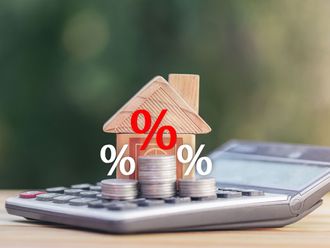At the half yearly stage, there seems to have been a sea change in opinion in terms of what the outlook is for Dubai’s real estate market.
At the beginning of the year, the prevailing zeitgeist appeared to be almost uniformly bearish, especially given the depressed oil prices, the resurgent dollar, and layoffs that appeared set to accelerate.
Since then, some of the variables have reversed course, and transnational as well as price data have indicated that there has been a gradual change in sentiments, with green shoots appearing on the price horizon in certain communities. However, there appears to be considerable scepticism that continue to prevail among some in the analyst community, with eloquent reports continuing to paint a doom and gloom scenario. Investors, therefore, remain in two camps. It is imperative to distinguish the signal from the noise and address underlying issues in the hopes of ascertaining what lies ahead.
1. Rents
Certain “anecdotal” reports indicate that renting has become somewhat more difficult, likely presaging an era of declines, something that has yet to materialise thus far in the data. In this camp, the argument that predominates cluster around the academic school year, and there is likely to be a considerable decline in the months leading to September as the impact of the layoffs reverberate throughout the real estate market. While this could yet transpire, it fails to acknowledge the number of jobs that have been created during this time in other sectors. And even though the positive impact of job creation may have thus far not counteracted the negative trajectory of job cuts, it appears as if the data indicates continued job creation, especially at the mid-income level.
A sector-wise job rotation appears likely to be underway, and while there has been an impact, the data suggests that the worst of it has already been dealt with.
2. Prices
Both in the off-plan as well as in the ready space, the worst affected thus far have been in the premium segment. This has long been highlighted me, as early as late 2013, indicating not only a period of overvaluation relative to fundamentals but also a relative paucity of supply at the mid-end.
This trend has played out both in terms of supply and price points; important to note is that it appears as if buying appetite is returning (not from the traditional spigots of investors, but rather from the category of end-users).
Worries of supply have also appeared to have been overblown, as markets have adjusted by delaying the supply pipeline in response to changing market trends. Post-handover payment plans continue to increase in popularity and seem to have had some success in stimulating demand, even though it is too early to postulate that with certainty.
3. Exogenous factors
From oil prices to the level of “financialisation”, there continues to be considerable hand wringing. Many of these concerns are valid. Equally important is to understand the nature of the “transmission” mechanisms that these have on the economy and how long it takes to reverberate in the face of counter-cyclical fiscal expansionary measures that have been put into place.
There appears to be a consensus that “This time is different”; what that means for the asset markets is an issue of considerable complexity. In the face of this, data again provides the key guide.
In terms of investment decision-making, history suggests that it is always been more profitable to invest in times of down markets. And while there may be some disagreement on the nature of every market cycle, greater volatility periods typically provide greater rate returns, especially when valuation criteria are met.
Investors and end-users would be well advised to take cognizance of this, and fight the “flight” mentality that dominates in times of greater uncertainty.
The key takeaway is that there is a lot of noise that dominates the discourse in real estate. Given its direct impact to the spending budget (whether through rents or mortgage payments), real estate is embedded into the zeitgeist of the city far more than what is seen in most other places.
When a slowdown is in effect, layoffs and other such negative news carry a far greater impact, especially in the “anecdotal” zeitgeist. It is important to note that the economy did not suffer the exogenous “oil shock” suddenly, but over the course of more than a year.
As such, the negative reverberations that have been felt have largely been counterbalanced by the expansionary fiscal policy measures. This is not to say positive “headlines” necessarily mean the opposite and that the markets are off to the races.
The bottom-line is that it is premature to declare a recession imminent, and that the analyst community more than anyone else has the responsibility to glean data on a continual basis to determine the impact on real estate and financial assets.
— The writer is Managing Director at Global Capital Partners.











